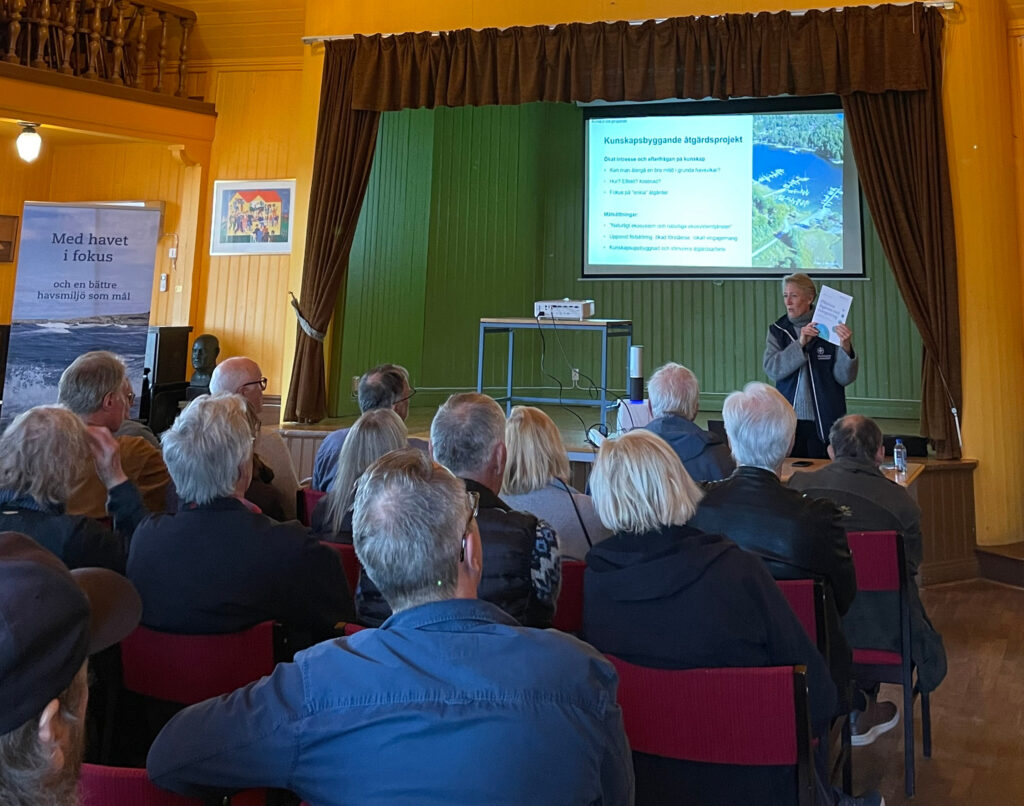It is easy to think that the answer to reversing the negative trend in the shallow bays of the Baltic Sea is to implement measures. This is true, but it must be the ‘right’ measures that address the source of the problem, not the symptoms. To find the right measures, researchers in the Living Bays project work with scientific sampling, analysis and monitoring in the action bays. But another vital element for the success of the measures and the sustainability of the results over time is local knowledge and commitment. Many who live and spend time in the bays have seen the changes in the environment and their experiences and perceptions are important knowledge that complements the scientific research in Living Bays.
Last year, four intervention bays were selected for further work within the project. Since then, the researchers have organised information meetings with the residents of each bay and there is great interest! Many are concerned about the negative development in their bay and are keen to help.
– I seem to speak for everyone here when I say that it is fantastic that you want to take action in our bay. What can we do to help? says one of the residents from Sandviken at the information meeting in April.

Linda Kumblad, Stockholm University/BalticWaters, introduces the Living Bays project to the residents of Sandviken. Photo: Nadja Halltin Nijm
Local anchoring of this kind is important for various reasons, partly to build confidence in the project and partly to spread knowledge to increase local understanding of the bay’s environment, its challenges and what they may be due to. At the same time, the residents’ knowledge of the local environment and how it has changed is very valuable to the project. For example, what fish species and underwater plants have been present in the bay over the years, when it started to smell bad from the bottom or how busy the bay is, whether the bottom has been dredged and the reeds cut or what the individual sewers look like. These can be pieces of the puzzle for researchers to understand connections and patterns about the bay’s environment and how it has developed.
Humans as central agents
The aim of Living Bays is to present which measures are suitable for improving the environmental quality of shallow bays, how effective different measures are and what is required to implement them. The project will produce practical advice and recommendations that can be used, for example, by municipalities and county administrative boards, individual homeowners, communities or boat clubs to restore these environments worthy of protection. If there is one thing that the study has shown so far, it is that the residents of the intervention bays are concerned about the negative development. We must therefore find ways to reverse the trend, while allowing people to continue doing what so many people enjoy, such as sunbathing and swimming, fishing, boating or enjoying a rich natural and animal life, but within the limits of the ecosystem. And for that we need Living Bays.

More about the Living Bays project
The aim of the Living Bays project is to try to show that it is possible to improve the environment in shallow bays and to develop knowledge about how this can be done in a cost-effective way. The project will test and evaluate individual measures in a number of case studies, and full-scale restoration will be carried out in a few shallow bays along the Svealand coast. Living Bays runs until 2027 and is implemented and financed by BalticWaters in close cooperation with, and with financial support from, Stockholm University and the Stockholm County Administrative Board. The Swedish Agency for Marine and Water Management (HaV) has allocated funds to Stockholm University for the implementation of sampling and monitoring in the project bays. A total of just over SEK 45 million is being invested in the project.

